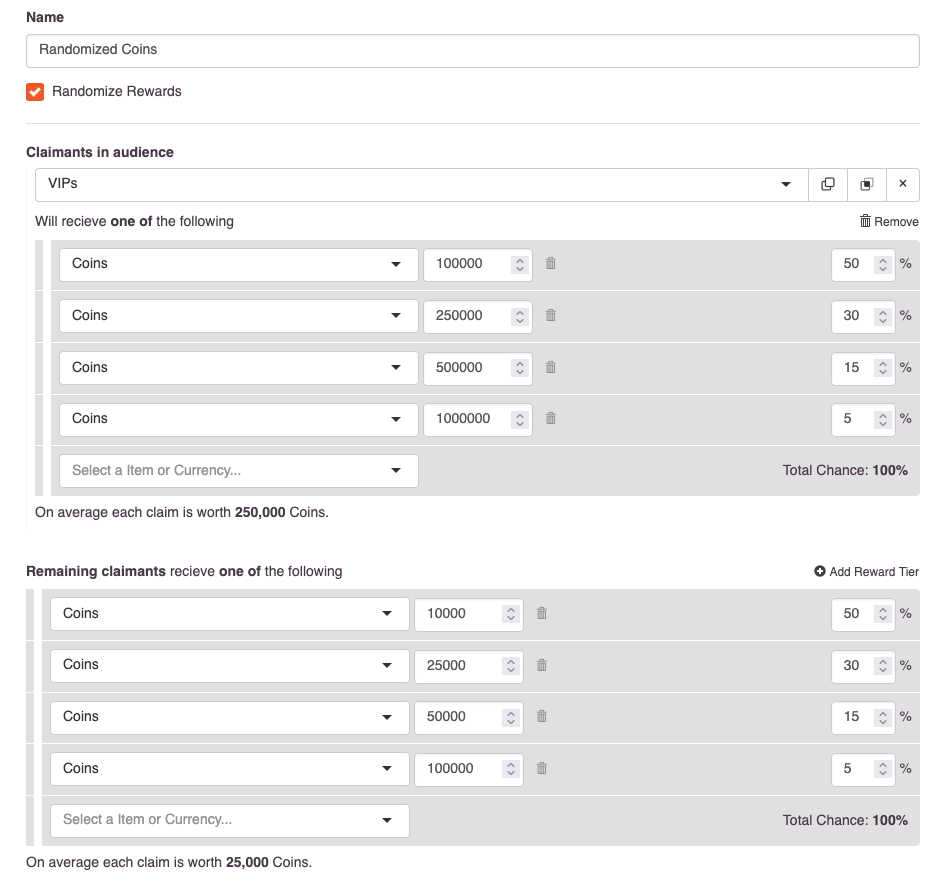
Recurring sends are an essential part of strategy when it comes to both retaining and onboarding players to your game. However, since they are recurring, they’re often automated and forgotten. This can result in content feeling stale and missed opportunities for improving response rates.
This is why reevaluating and examining your recurring notifications is an important daily task in a gaming CRM’s life. Today, we’re going to take you through essential best practices for creating and updating recurring sends, along with some tips on how to get the most out of them.
![]()
Types of Recurring Sends
The two main types of recurring notifications you’ll see in Teak are triggered and scheduled. Triggered is a notification that is sent when something happens, like when a player drops from playing every day to every other day. Scheduled is a notification that is sent based on a time of day, so it’s more geared towards players who are consistently logging in and playing.
We’ll get more into how to use these two types of notifications below.
Recurring Sends Should Correspond to the Player Lifecycle Phase
The first key step to consider when crafting strategy for recurring sends is understanding the Player Lifecycle. We’ve explored the Lifecycle pretty extensively in past articles, and we even have a guide here for you to utilize. Each phase of the lifecycle should have a different kind of recurring send that strategically makes sense with that lifecycle phase.
As a general rule, use triggered notifications for new, lapsed, dormant, and resurrected players. These lifecycle stages are generally defined by how long it has been since a player performed some activity, such as installing or playing. Using triggered notifications ensures your message timing aligns with each lifecycle stage.
Scheduled notifications should be used for both core and risk phases of the lifecycle, so that those sends can be easily managed by you directly and can integrate with other notification cadences you have. These audiences are also receiving one-off sends about in-game events and offers, so it’s important to reevaluate your recurring sends alongside those other notifications you send. Luckily, we make that easy in Teak! Your dashboard is set up so that you can easily take a glance at any recurring sends currently going out. You can also name your Schedules based on the player lifecycle, so searching for “CORE”, for example, and filtering to repeating would show all recurring messaging currently going out to your Core player group.
Use Varied Content to Ensure Diversity in Messaging
Varied content helps ensure players see different messages each time they’re sent a recurring notification. This Teak feature is crucial when it comes to recurring sends to ensure your notifications don’t become overly repetitive. Essentially you can create a bucket of messages with different copy, images, headlines…really anything! Then Teak will select a random message for each player each day when sending the recurring notification. This unique Teak feature lets you vary your messaging without extra effort.
It is particularly important to use varied content where the same player could receive the same recurring message multiple times. The first place where this can happen is for your active players - that audience receives the most pushes of any audience you have, so ensuring your content is different each time they see it is important. Additionally, active players are going to remain active if they’re interacting with your pushes, so making sure they don’t get the same push every day is essential.
The other is for notifications sent based on something a player could do multiple times, such as a notification triggered by a player leveling up or making a purchase. Set up varied content for notifications triggered by purchases so they don’t see the same notification every time they buy something in your game.
Randomize Rewards to Prevent Repetition
When we talk about recurring pushes, it’s important to remember to not just vary the copy or media, but also the reward accompanying that push.
Like to varied content, Teak allows you to randomize rewards, keeping them fresh and engaging for players. Randomized rewards let you configure a drop table, offering players a chance to receive different prizes (e.g., 50% for a small prize, 40% for a medium prize, and 10% for a grand prize) when they tap on a notification. This lets you offer a larger maximum reward to generate excitement, without needing to give that reward to every player.
You can even tier your random rewards, so different groups get different randomizations and maximum rewards. For example, you can send a daily mystery bonus which offers regular players between 10,000 and 100,000 coins but offers your VIPs between 100,000 and 1,000,000 coins. We have a lot more on personalizing VIP reward tiers in this guide here.

Teak makes it easy to randomize and tier your rewards.
Leverage Recurring Sends for Your A/B Tests
Recurring sends are ideal for A/B testing because they can accumulate a lot of sends and data over time, letting you gather valuable learnings without a lot of effort. With recurring sends, the high send volumes and low effort required allow you to focus on incremental improvements in content and rewards.
Recurring sends are an excellent place to try offering slightly larger or smaller rewards to see how that impacts response rates. You can also test out something like making minor changes to copy. With a recurring send, you can run an A/B test for a week by setting it up and letting it run, while for one-off sends you would have to configure variations for every send you make.
Recurring sends are also an excellent place to test the impact of personalizing rewards by VIP tier or spend.
Don’t Let Recurring Sends Fall to the Wayside
Overall, it’s crucial for you to always evaluate and monitor recurring sends, employing the strategies outlined above but also auditing them consistently. It’s easy to set and forget them, but reviewing and refining them should be a top priority each day and during strategy evaluations.
We’re curious to hear what’s worked in the past for you with recurring sends and what interesting learnings you’ve taken from them? Let us know!
Erica + Teak team